Pokemon theme by sowden 248
Download: Pokemon.p3t
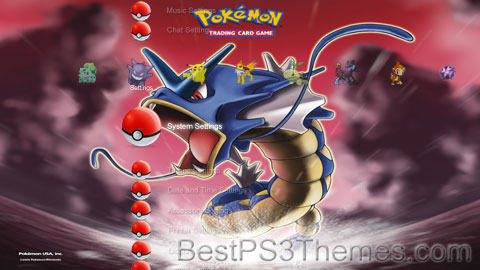
(5 backgrounds)
Redirect to:
This page is a redirect. The following categories are used to track and monitor this redirect:
|
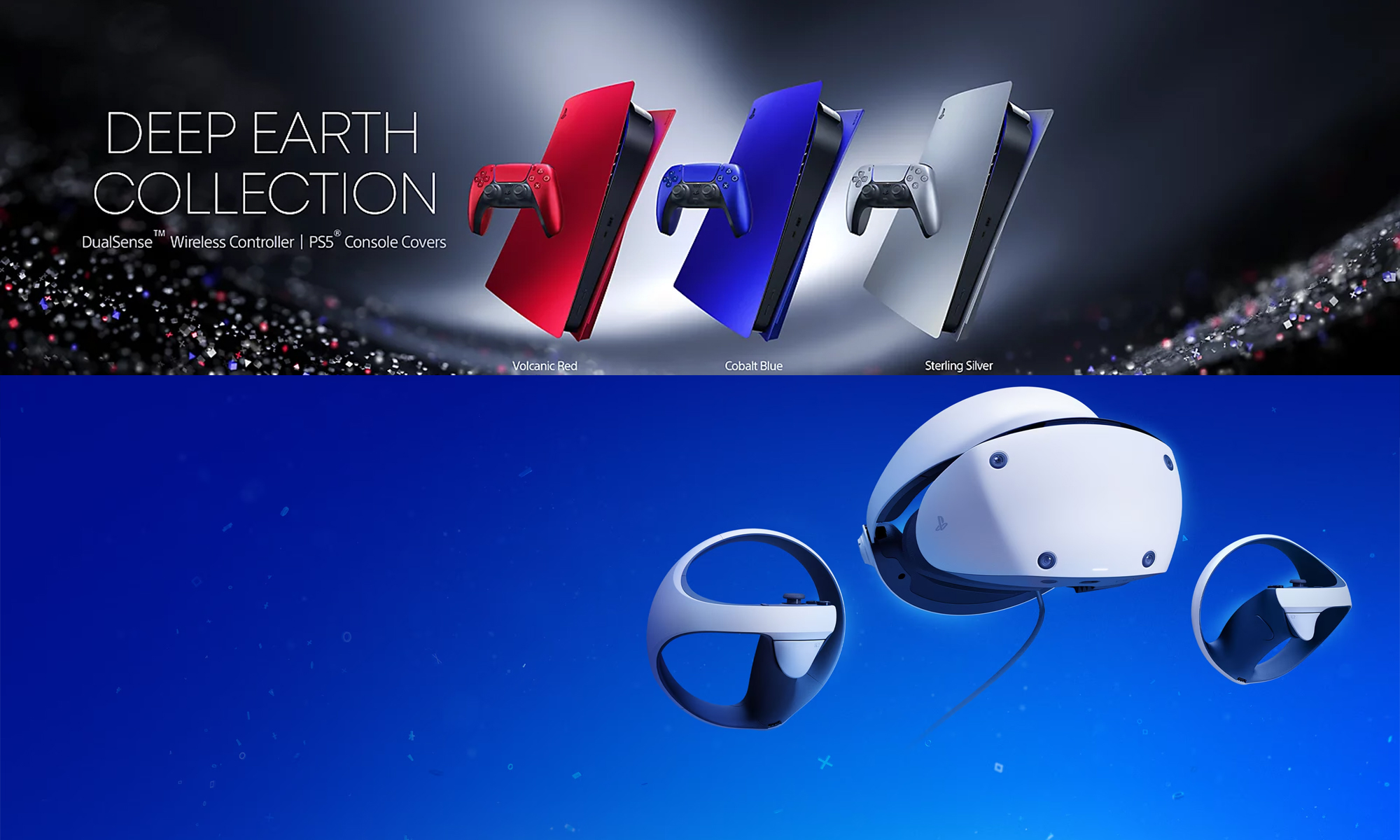
The #1 spot for Playstation themes!
Pokemon theme by sowden 248
Download: Pokemon.p3t

(5 backgrounds)
Redirect to:
This page is a redirect. The following categories are used to track and monitor this redirect:
|
Dwight Howard theme by frankie
Download: DwightHoward.p3t
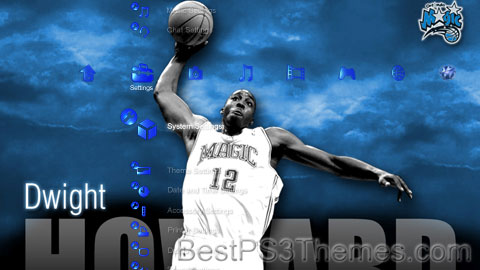
(15 backgrounds)
Dwight David Howard II (born December 8, 1985) is an American professional basketball player for the Taiwan Mustangs of The Asian Tournament (TAT). He began his career in the National Basketball Association (NBA), where he was an NBA champion, eight-time All-Star, eight-time All-NBA Team honoree, five-time All-Defensive Team member, and three-time Defensive Player of the Year.
Howard, who plays center, spent his high school career at Southwest Atlanta Christian Academy. He chose to forgo college, entered the 2004 NBA draft, and was selected first overall by the Orlando Magic. Howard set numerous franchise and league records with the Magic. He led the team to the 2009 NBA Finals.
In 2012, after eight seasons with Orlando, Howard was traded to the Los Angeles Lakers, with whom he spent three separate one year-stints over the course of his career, winning the NBA Finals in 2020. He has also played for the Houston Rockets, the Atlanta Hawks, the Charlotte Hornets, the Washington Wizards, and the Philadelphia 76ers.
After playing with the Lakers in 2021–22, Howard moved overseas and signed with the Taiwanese-based Leopards. In his first season with the team, he was named a T1 All-Star.
Howard was born in Atlanta, to Dwight Sr. and Sheryl Howard, a family with strong athletic connections. His father is a Georgia State Trooper and is the athletic director at Southwest Atlanta Christian Academy, a private academy with one of the country's best high school basketball programs; his mother played on the inaugural women's basketball team at Morris Brown College.[1] Howard's mother had seven miscarriages before he was born.[2] A devout Christian since his youth, Howard became serious about basketball around the age of nine.[3][4] Despite his large frame, Howard was quick and versatile enough to play the guard position.[4] He attended Southwest Atlanta Christian Academy and played mostly as power forward, averaging 16.6 points, 13.4 rebounds and 6.3 blocks per game in 129 appearances.[1][4] As a senior, Howard led his team to a 31–2 record and the 2004 state title,[4][5] while averaging 25 points, 18 rebounds, 8.1 blocks and 3.5 assists per game.[4] The same year, he was widely recognized as the best American high school basketball player, and received the Naismith Prep Player of the Year Award, the Morgan Wootten High School Player of the Year Award, Gatorade National Player of the Year and the McDonald's National High School Player of the Year honor.[6] He was also co-MVP (with J. R. Smith) of the McDonald's All-American Game that year.[6] On January 31, 2012, Howard was honored as one of the 35 greatest McDonald's All-Americans.[7]
Following his high school successes, Howard chose to forego college and declared for the 2004 NBA draft—a decision partly inspired by his idol Kevin Garnett who had done the same in 1995—where the Orlando Magic selected him first overall over UConn junior Emeka Okafor.[1][4] He took the number 12 for his jersey, in part because it was the reverse of Garnett's 21 when he played for Minnesota.[8] Howard joined a depleted Magic squad that had finished with only 21 victories the previous season; further, the club had just lost perennial NBA All-Star Tracy McGrady.[4] Howard, however, made an immediate impact. He finished his rookie season with an average of 12 points and 10 rebounds,[9] setting several NBA records in the process. He became the youngest player in NBA history to average a double double in the regular season.[6] He also became the youngest player in NBA history to average at least 10 rebounds in a season and youngest NBA player ever to record at least 20 rebounds in a game.[6] Howard's importance to the Magic was highlighted when he became the first player in NBA history directly out of high school to start all 82 games during his rookie season.[6] For his efforts, he was selected to play in the 2005 NBA Rookie Challenge, and was unanimously selected to the All-Rookie Team.[6] He also finished third in the Rookie of the Year voting.[10]
Howard reported to camp for his second NBA season having added 20 pounds of muscle during the off-season.[4] Orlando coach Brian Hill—responsible for grooming former Magic superstar Shaquille O'Neal—decided that Howard should be converted into a full-fledged center.[4] Hill identified two areas where Howard needed to improve: his post-up game and his defense. He exerted extra pressure on Howard, saying that the Magic would need him to emerge as a force in the middle before the team had a chance at the playoffs.[4] On November 15, 2005, in a home game against the Charlotte Bobcats, Howard recorded 21 points and 20 rebounds, becoming the youngest player ever to score 20 or more points and gather 20 or more rebounds in the same game.[11] He was selected to play on the Sophomore Team in the 2006 Rookie Challenge during the All-Star break.[1] Overall, he averaged 15.8 points and 12.5 rebounds per game,[9] ranking second in the NBA in rebounds per game, offensive rebounds, and double-doubles and sixth in field goal percentage.[1] Despite Howard's improvement, the Magic finished the season with a 36–46 record and failed to qualify for the playoffs for the second consecutive season since Howard's arrival.[12]

In the 2006–07 season (and for the third consecutive season), Howard played in all 82 regular-season games.[9] On February 1, 2007, he received his first NBA All-Star selection as a reserve on the Eastern Conference squad for the 2007 NBA All-Star Game.[1] On February 9, he made a game-winning alley-oop off an inbound pass at the buzzer against the San Antonio Spurs.[13] Howard set a new career high with 35 points against the Philadelphia 76ers on April 14.[14] Under his leadership, the Magic qualified for the 2007 NBA Playoffs as the eighth seed in the Eastern Conference.[15] There, the Magic were swept by the Detroit Pistons in the first round.[16] For the season, Howard averaged 17.6 points and 12.3 rebounds per game, finishing first in the NBA in total rebounds, second in field goal percentage, and ninth in blocks. He was named to the All-NBA Third Team at the end of the 2006–07 campaign.[17]
Howard continued posting impressive numbers in the 2007–08 season and helped the Magic have their best season to date. Howard was named as a starter for the Eastern Conference All-Star team.[18][19] On February 16, 2008, he won the NBA Slam Dunk Contest by receiving 78% of the fan's votes via text messaging or online voting; in that contest, he performed a series of innovative dunks said to have rejuvenated the contest, including donning a Superman cape for one of the dunks.[20] Howard led the Magic to their first division title in 12 years and to the third seed for the 2008 NBA Playoffs.[19] In their first round match-up against the Toronto Raptors, Howard's dominance (three 20-point/20-rebound games) helped Orlando to prevail in five games.[21] Howard's series total of 91 rebounds was also greater than the total rebounds collected by the entire Toronto frontcourt.[22] In the second round against the Pistons, the Magic lost in five games.[23] For the season, Howard was named to the All-NBA First Team for the first time,[19] and was also named to the NBA All-Defensive Second Team.[24]
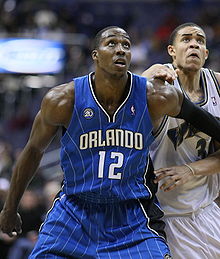
The 2008–09 season began well for Howard. Ten games into the season, the center was leading the league in blocks per game (4.2).[25] In December, Howard injured his left knee, which caused him to miss a game due to injury for the first time in his NBA career; previously, he had played in 351 consecutive games.[26] He garnered a record 3.1 million votes to earn the starting berth on the Eastern Conference team for the 2009 NBA All-Star Game.[27] Howard led Orlando to its second straight Southeast Division title[28] and to the third seed for the 2009 NBA Playoffs; the team finished the season with a 59–23 record.[29] In the first round of the playoffs against the 76ers, Howard recorded 24 points and 24 rebounds in Game 5 to give Orlando a 3–2 lead before the Magic closed out the series in six games. In the second round against the Boston Celtics, after the Magic blew a lead in Game 5 to fall behind 3–2 in the series, Howard publicly stated that he should have been given the ball more and questioned coach Stan Van Gundy's tactics. The Magic went on to defeat Boston to win the series and move on to the Eastern Conference Finals. There they, defeated the Cleveland Cavaliers 4–2. Howard had a playoff career-high 40 points to go with his 14 rebounds in the deciding Game 6, leading Orlando to the NBA Finals for the first time in 14 years.[30] In the NBA Finals, the Los Angeles Lakers took the first two home games, before a home win by the Magic brought the deficit to 2–1. In Game 4, despite Howard putting up 21 rebounds and a Finals record of 9 blocks in a game, the Magic lost in overtime.[31] The Lakers went on to clinch the series with a win in Game 5.[32] For the season, Howard became the youngest player ever to win the NBA Defensive Player of the Year Award.[8] He was also named to the NBA All-Defensive First Team,[33] and to the All-NBA First Team.[34]

In the 2009–10 season, the Magic got off to a strong start, winning 17 of their first 21 games and setting a franchise record. On January 21, 2010, Howard was named as the starting center for the East in the 2010 NBA All-Star Game.[35] The Magic completed the regular season with 59 wins and their third consecutive division title. The Magic's playoff run resulted another Eastern Conference Finals appearance, where they lost in six games to the Celtics. Howard won the Defensive Player of the Year Award for the second straight year.[36] He became the first player in NBA history to lead the league in blocks and rebounds in the same season twice—and for two years in a row.[36]
In the 2010–11 season, Howard posted career highs in points and field goal percentage. He became the first player in league history to win Defensive Player of the Year honors for three consecutive seasons. Howard led the league in double-doubles and also averaged 14.1 rebounds, 2.3 blocks and a career-high 1.3 steals this season.[37] He led the Magic to 52 wins, as they finished as the fourth seed in the Eastern Conference. They went on to lose to the Atlanta Hawks in the first round of 2011 NBA Playoffs.[38] He had a playoff career-high 46 points and 19 rebounds in Orlando's 103–93 loss to Atlanta in Game 1.[37] Howard led the NBA in technical fouls with 18 in the regular season, and received one-game suspensions after his 16th and 18th technicals.[39]
Due to a lockout, the 2011–12 regular season was shortened to 66 games. Not long after the lockout ended, Howard, who was eligible to become a free agent at the end of the season, demanded a trade to the New Jersey Nets, Los Angeles Lakers or Dallas Mavericks.[40] Howard stated that although his preference was to remain in Orlando, he did not feel the Magic organization was doing enough to build a championship contender.[41] He would later meet with Magic officials and agree to back off his trade demands, but stated that he also felt the team needed to make changes to the roster if they wanted to contend for a championship.[42]

On January 12, 2012, Howard attempted an NBA regular season record 39 free throws against the Golden State Warriors. Howard entered the game making 42 percent of his free throws for the season and just below 60 percent for his career. The Warriors hacked Howard intentionally throughout the game, and he broke Wilt Chamberlain's regular-season record of 34 set in 1962. Howard made 21 of the 39 attempts, finishing with 45 points and 23 rebounds in the Magic's 117–109 victory.[43] On January 24, 2012, Howard became the Magic's all-time scoring leader.[44]
On March 15, 2012, on the day of the trading deadline for the 2011–12 NBA season, Howard waived his right to opt out of his contract at the end of the season and committed to stay with the Magic through the 2012–13 season. He had previously asked to be traded to the New Jersey Nets. Had he not signed the amendment, the Magic were prepared to trade him to avoid losing him as a free agent.[45] On April 5, Van Gundy said that he had been informed by management that Howard wanted him fired. During the interview, the center walked up and hugged his coach, unaware that Van Gundy had confirmed a report that Howard denied.[46][47] Van Gundy was let go after the season.[48]
On April 19, 2012, Howard's agent said that Howard would undergo surgery to repair a herniated disk in his back and would miss the rest of the 2011–12 season, as well as the 2012 Summer Olympics in London.[49] During the offseason, Howard again requested a trade to the Nets, who had relocated to Brooklyn. He intended to become a free agent at the end of the 2012–13 season if he was not traded to Brooklyn.[50][51]

On August 10, 2012, Howard was traded from Orlando to the Los Angeles Lakers in a deal that also involved the Philadelphia 76ers and the Denver Nuggets. Howard took six months off from basketball after his April back surgery, and only had the combined four weeks of training camp and preseason to prepare for the season.[52][53] Still working himself into shape, Howard paced himself throughout the season on both offense and defense.[53] On January 4, 2013, Howard injured his right shoulder in the second half of the Lakers' 107–102 loss to the
Ohio State theme by Jay Bird Download: OhioState.p3t Redirect to: Tecmo Super Bowl theme by Grogan Download: TecmoSuperBowl.p3t
Tecmo Super Bowl[a] is an American football video game for the Nintendo Entertainment System (NES) that was released in December 1991. Developed by Tecmo, it is the first sports video game that was licensed by both the National Football League and the National Football League Players Association, thus allowing the game to use both the names and attributes of real NFL teams and real NFL players. Prior games use either the real teams, the real players, or fictional substitutes, but not real teams and real players together.
The game was a major success,[1] resulting in several follow-ups for subsequent game consoles. The NES original has had an extensive cult following across the decades,[2] with widely covered tournaments as the game modification community provides annual roster updates. It has been variously named as one of the best NES games, one of the best sports games, and one of the most influential video games of all time.
With Tecmo Bowl for NES in 1989, Tecmo had procured an official license from the National Football League Players Association, providing twelve teams and a truncated roster. The full NFL team license was unavailable because of the exclusive license held for another NES game, NFL published by LJN.[3] The success of Tecmo Bowl was followed by the release of Tecmo Super Bowl in 1991 in North America and Japan,[4] for which Tecmo acquired both sets of the NFL/NFLPA licenses, making it the first and only NES game to feature both real NFL teams and players. Although the game was released in late 1991, all team rosters and player attributes are from the prior 1990–91 NFL season, so it contains no rookies taken in the 1991 NFL draft and no player team changes executed before the start of the 1991 season.
Tecmo Super Bowl surpasses its predecessor with the complete 1991 league of 28 teams,[5][6] expanded rosters, expanded playbooks, and statistical tracking including NFL records. Jim Kelly, Randall Cunningham, and Bernie Kosar are represented by generic names of QB Bills, QB Eagles, and QB Browns, respectively, because the players were not members of the NFLPA's marketing contract.[7] This gameplay foundation would be expanded upon during the course of the series' run.
In the United States, Tecmo Super Bowl topped Babbage's NES sales charts for three months in 1992, from October to December.[11][12][13] At a retail price of $54.99 (equivalent to $119 in 2023), it was the most expensive NES game released to date.[14]
In 1997, Electronic Gaming Monthly and IGN each named Tecmo Super Bowl as one of the top 100 video games of all time.[15][1] IGN ranked Tecmo Super Bowl number 53 in its top 100 NES games.[16] GamesRadar ranked it number 22 in its list of the best NES games, noting that it may be the only football game from the NES still widely played.[17] PC Magazine ranked the game number 10 in its list of the ten most-influential video games of all time.[18] ESPN named Tecmo Super Bowl the greatest sports video game of all time.[19]
Tecmo produced several direct sequels to Tecmo Super Bowl, and other games originating with the Tecmo Bowl engine. 16-bit versions of Tecmo Super Bowl for the Super NES and Genesis were released in 1993 (reflecting the rosters and attributes for that season), which fixed many bugs and added some new features. New features include these: improved game graphics and sound; official NFL team logos in the end zones; user-controlled touchbacks; the ability to control a player to attempt a punt block; the in-game option to change plays in a team's playbook during games; a running back "dive play" option; a designated return team that includes defensive backs; statistical achievements during games; and three weather conditions (sunny, rain and snow), which can occur randomly in Season mode. Accelerated fifteen-minute and ten-minute quarters can only be used for Exhibition and Pro Bowl games. The game can play three consecutive seasons (1991–1993). Sequels to these versions, Tecmo Super Bowl II: Special Edition and Tecmo Super Bowl III: Final Edition, were released in subsequent years for the Super NES and Genesis. These were followed by Tecmo Super Bowl for the PlayStation in 1996.
Tecmo Super Bowl for the PlayStation sports new features such as a new player editor which can make unlimited amounts of unrestricted trades, change jersey numbers, edit player attributes, edit names, and swap player portraits. It has a play-by-play announcer voice. Offenses can pick a formation before selecting a particular play. The game has alternate camera angles, instant replay, and the option to adjust AI difficulty in regular season games. This is the last entry in the series to have the NFL and NFLPA licenses, and reflected the rosters and attributes of the 1996 season.
A Sega Saturn version was in development,[20][21] but was never released. Subsequent entries, such as 2008's Tecmo Bowl: Kickoff for the Nintendo DS,[22] and 2010's Tecmo Bowl Throwback for the Xbox 360 and PS3 feature generic players and teams, due to Electronic Arts obtaining the exclusive NFL and NFLPA licenses in 2004 for the Madden NFL series.
Since the advent of modern console emulation on computers, Tecmo Super Bowl is one of the most modified NES games. This contributes greatly to its cult following as it is constantly updated with rosters for college and professional football. Numerous websites are dedicated to pickup games, online leagues, and message boards for the original game and its mods.[2] In 2016, popularity spiked with 26 national tournaments,[23] Tecmo Madison XIII's livestream having 161,076 viewers,[24] and ESPN.com providing coverage.[25][26]
An episode of NFL Films Presents documents the video game and its cult following. Centering on the annual world championship tournament in Madison, Wisconsin,[27] the episode includes interviews with NFL greats such as Emmitt Smith and Christian Okoye[28] who are featured in the original game, and modern NFL players such as Philip Rivers who discuss their passion for the game.[29]
Gameplay is featured in the Family Guy episode "Run, Chris, Run", where Peter uses Bo Jackson to beat Quagmire.[30]
Tecmo Bowl is a central theme for two 2016 Kia Sorento commercials, starring Bo Jackson and playing off his ridiculously advantageous in-game characteristics. One features Brian Bosworth, who had been famously run over by Jackson during a Monday Night Football game in 1987 as he attempted to score a touchdown.[31]
Superman theme by Megatron Download: Superman_6.p3t
Superman is a superhero who appears in American comic books published by DC Comics. The character was created by writer Jerry Siegel and artist Joe Shuster, and debuted in the comic book Action Comics #1 (cover-dated June 1938 and published April 18, 1938).[1] Superman has been adapted to a number of other media, which includes radio serials, novels, films, television shows, theater, and video games.
Superman was born on the fictional planet Krypton with the birth name of Kal-El. As a baby, his parents sent him to Earth in a small spaceship shortly before Krypton was destroyed in a natural cataclysm. His ship landed in the American countryside near the fictional town of Smallville, Kansas. He was found and adopted by farmers Jonathan and Martha Kent, who named him Clark Kent. Clark began developing various superhuman abilities, such as incredible strength and impervious skin. His adoptive parents advised him to use his powers for the benefit of humanity, and he decided to fight crime as a vigilante. To protect his personal life, he changes into a colorful costume and uses the alias "Superman" when fighting crime. Clark resides in the fictional American city of Metropolis, where he works as a journalist for the Daily Planet. Superman's supporting characters include his love interest and fellow journalist Lois Lane, Daily Planet photographer Jimmy Olsen, and editor-in-chief Perry White, and his enemies include Brainiac, General Zod, and archenemy Lex Luthor.
Superman is the archetype of the superhero: he wears an outlandish costume, uses a codename, and fights evil with the aid of extraordinary abilities. Although there are earlier characters who arguably fit this definition, it was Superman who popularized the superhero genre and established its conventions. He was the best-selling superhero in American comic books up until the 1980s.[2]
Jerry Siegel and Joe Shuster met in 1932 while attending Glenville High School in Cleveland and bonded over their admiration of fiction. Siegel aspired to become a writer and Shuster aspired to become an illustrator. Siegel wrote amateur science fiction stories, which he self-published as a magazine called Science Fiction: The Advance Guard of Future Civilization. His friend Shuster often provided illustrations for his work.[3] In January 1933, Siegel published a short story in his magazine titled "The Reign of the Superman". The titular character is a homeless man named Bill Dunn who is tricked by an evil scientist into consuming an experimental drug. The drug gives Dunn the powers of mind-reading, mind-control, and clairvoyance. He uses these powers maliciously for profit and amusement, but then the drug wears off, leaving him a powerless vagrant again. Shuster provided illustrations, depicting Dunn as a bald man.[4]
Siegel and Shuster shifted to making comic strips, with a focus on adventure and comedy. They wanted to become syndicated newspaper strip authors, so they showed their ideas to various newspaper editors. However, the newspaper editors told them that their ideas were insufficiently sensational. If they wanted to make a successful comic strip, it had to be something more sensational than anything else on the market. This prompted Siegel to revisit Superman as a comic strip character.[5][6] Siegel modified Superman's powers to make him even more sensational: Like Bill Dunn, the second prototype of Superman is given powers against his will by an unscrupulous scientist, but instead of psychic abilities, he acquires superhuman strength and bullet-proof skin.[7][8] Additionally, this new Superman was a crime-fighting hero instead of a villain, because Siegel noted that comic strips with heroic protagonists tended to be more successful.[9] In later years, Siegel once recalled that this Superman wore a "bat-like" cape in some panels, but typically he and Shuster agreed there was no costume yet, and there is none apparent in the surviving artwork.[10][11]
Siegel and Shuster showed this second concept of Superman to Consolidated Book Publishers, based in Chicago.[12][a] In May 1933, Consolidated had published a proto-comic book titled Detective Dan: Secret Operative 48.[13] It contained all-original stories as opposed to reprints of newspaper strips, which was a novelty at the time.[14] Siegel and Shuster put together a comic book in a similar format called The Superman. A delegation from Consolidated visited Cleveland that summer on a business trip and Siegel and Shuster took the opportunity to present their work in person.[15][16] Although Consolidated expressed interest, they later pulled out of the comics business without ever offering a book deal because the sales of Detective Dan were disappointing.[17][18]
Siegel believed publishers kept rejecting them because he and Shuster were young and unknown, so he looked for an established artist to replace Shuster.[19] When Siegel told Shuster what he was doing, Shuster reacted by burning their rejected Superman comic, sparing only the cover. They continued collaborating on other projects, but for the time being Shuster was through with Superman.[20]
Siegel wrote to numerous artists.[19] The first response came in July 1933 from Leo O'Mealia, who drew the Fu Manchu strip for the Bell Syndicate.[21][22] In the script that Siegel sent to O'Mealia, Superman's origin story changes: He is a "scientist-adventurer" from the far future when humanity has naturally evolved "superpowers". Just before the Earth explodes, he escapes in a time-machine to the modern era, whereupon he immediately begins using his superpowers to fight crime.[23] O'Mealia produced a few strips and showed them to his newspaper syndicate, but they were rejected. O'Mealia did not send to Siegel any copies of his strips, and they have been lost.[24]
In June 1934, Siegel found another partner: an artist in Chicago named Russell Keaton.[25][26] Keaton drew the Buck Rogers and Skyroads comic strips. In the script that Siegel sent Keaton in June, Superman's origin story further evolved: In the distant future, when Earth is on the verge of exploding due to "giant cataclysms", the last surviving man sends his three-year-old son back in time to the year 1935. The time-machine appears on a road where it is discovered by motorists Sam and Molly Kent. They leave the boy in an orphanage, but the staff struggle to control him because he has superhuman strength and impenetrable skin. The Kents adopt the boy and name him Clark, and teach him that he must use his fantastic natural gifts for the benefit of humanity. In November, Siegel sent Keaton an extension of his script: an adventure where Superman foils a conspiracy to kidnap a star football player. The extended script mentions that Clark puts on a special "uniform" when assuming the identity of Superman, but it is not described.[27] Keaton produced two weeks' worth of strips based on Siegel's script. In November, Keaton showed his strips to a newspaper syndicate, but they too were rejected, and he abandoned the project.[28][29]
Siegel and Shuster reconciled and resumed developing Superman together. The character became an alien from the planet Krypton. Shuster designed the now-familiar costume: tights with an "S" on the chest, over-shorts, and a cape.[30][31][32] They made Clark Kent a journalist who pretends to be timid, and conceived his colleague Lois Lane, who is attracted to the bold and mighty Superman but does not realize that he and Kent are the same person.[33]
In June 1935 Siegel and Shuster finally found work with National Allied Publications, a comic magazine publishing company in New York owned by Malcolm Wheeler-Nicholson.[35] Wheeler-Nicholson published two of their strips in New Fun Comics #6 (1935): "Henri Duval" and "Doctor Occult".[36] Siegel and Shuster also showed him Superman and asked him to market Superman to the newspapers on their behalf.[37] In October, Wheeler-Nicholson offered to publish Superman in one of his own magazines.[38] Siegel and Shuster refused his offer because Wheeler-Nicholson had demonstrated himself to be an irresponsible businessman. He had been slow to respond to their letters and had not paid them for their work in New Fun Comics #6. They chose to keep marketing Superman to newspaper syndicates themselves.[39][40] Despite the erratic pay, Siegel and Shuster kept working for Wheeler-Nicholson because he was the only publisher who was buying their work, and over the years they produced other adventure strips for his magazines.[41]
Wheeler-Nicholson's financial difficulties continued to mount. In 1936, he formed a joint corporation with Harry Donenfeld and Jack Liebowitz called Detective Comics, Inc. in order to release his third magazine, which was titled Detective Comics. Siegel and Shuster produced stories for Detective Comics too, such as "Slam Bradley". Wheeler-Nicholson fell into deep debt to Donenfeld and Liebowitz, and in early January 1938, Donenfeld and Liebowitz petitioned Wheeler-Nicholson's company into bankruptcy and seized it.[3][42]
In early December 1937, Siegel visited Liebowitz in New York, and Liebowitz asked Siegel to produce some comics for an upcoming comic anthology magazine called Action Comics.[43][44] Siegel proposed some new stories, but not Superman. Siegel and Shuster were, at the time, negotiating a deal with the McClure Newspaper Syndicate for Superman. In early January 1938, Siegel had a three-way telephone conversation with Liebowitz and an employee of McClure named Max Gaines. Gaines informed Siegel that McClure had rejected Superman, and asked if he could forward their Superman strips to Liebowitz so that Liebowitz could consider them for Action Comics. Siegel agreed.[45] Liebowitz and his colleagues were impressed by the strips, and they asked Siegel and Shuster to develop the strips into 13 pages for Action Comics.[46] Having grown tired of rejections, Siegel and Shuster accepted the offer. At least now they would see Superman published.[47][48] Siegel and Shuster submitted their work in late February and were paid $130 (equivalent to $2,814 in 2023) for their work ($10 per page).[49] In early March they signed a contract at Liebowitz's request in which they gave away the copyright for Superman to Detective Comics, Inc. This was normal practice in the business, and Siegel and Shuster had given away the copyrights to their previous works as well.[50]
The duo's revised version of Superman appeared in the first issue of Action Comics, which was published on April 18, 1938. The issue was a huge success thanks to Superman's feature.[1][51][52]
Siegel and Shuster read pulp science-fiction and adventure magazines, and many stories featured characters with fantastical abilities such as telepathy, clairvoyance, and superhuman strength. One character in particular was John Carter of Mars from the novels by Edgar Rice Burroughs. John Carter is a human who is transported to Mars, where the lower gravity makes him stronger than the natives and allows him to leap great distances.[53][54] Another influence was Philip Wylie's 1930 novel Gladiator, featuring a protagonist named Hugo Danner who had similar powers.[55][56]
Superman's stance and devil-may-care attitude were influenced by the characters of Douglas Fairbanks, who starred in adventure films such as The Mark of Zorro and Robin Hood.[57] The name of Superman's home city, Metropolis, was taken from the 1927 film of the same name.[58] Popeye cartoons were also an influence.[58]
Clark Kent's harmless facade and dual identity were inspired by the protagonists of such movies as Don Diego de la Vega in The Mark of Zorro and Sir Percy Blakeney in The Scarlet Pimpernel. Siegel thought this would make for interesting dramatic contrast and good humor.[59][60] Another inspiration was slapstick comedian Harold Lloyd. The archetypal Lloyd character was a mild-mannered man who finds himself abused by bullies but later in the story snaps and fights back furiously.[61]
Kent is a journalist because Siegel often imagined himself becoming one after leaving school. The love triangle between Lois Lane, Clark, and Superman was inspired by Siegel's own awkwardness with girls.[62]
The pair collected comic strips in their youth, with a favorite being Winsor McCay's fantastical Little Nemo.[58] Shuster remarked on the artists who played an important part in the development of his own style: "Alex Raymond and Burne Hogarth were my idols – also Milt Caniff, Hal Foster, and Roy Crane."[58] Shuster taught himself to draw by tracing over the art in the strips and magazines they collected.[3]
As a boy, Shuster was interested in fitness culture[63] and a fan of strongmen such as Siegmund Breitbart and Joseph Greenstein. He collected fitness magazines and manuals and used their photographs as visual references for his art.[3]
The visual design of Superman came from multiple influences. The tight-fitting suit and shorts were inspired by the costumes of wrestlers, boxers, and strongmen. In early concept art, Shuster gave Superman laced sandals like those of strongmen and classical heroes, but these were eventually changed to red boots.[34] The costumes of Douglas Fairbanks were also an influence.[64] The emblem on his chest was inspired by heraldic crests.[65] Many pulp action heroes such as swashbucklers wore capes. Superman's face was based on Johnny Weissmuller with touches derived from the comic-strip character Dick Tracy and from the work of cartoonist Roy Crane.[66]
The word "superman" was commonly used in the 1920s and 1930s to describe men of great ability, most often athletes and politicians.[67] It occasionally appeared in pulp fiction stories as well, such as "The Superman of Dr. Jukes".[68] It is unclear whether Siegel and Shuster were influenced by Friedrich Nietzsche's concept of the Übermensch; they never acknowledged as much.[69]
Since 1938, Superman stories have been regularly published in periodical comic books published by DC Comics. The first and oldest of these is Action Comics, which began in April 1938.[1] Action Comics was initially an anthology magazine, but it eventually became dedicated to Superman stories. The second oldest periodical is Superman, which began in June 1939. Action Comics and Superman have been published without interruption (ignoring changes to the title and numbering scheme).[71][72] A number of other shorter-lived Superman periodicals have been published over the years.[73] Superman is part of the DC Universe, which is a shared setting of superhero characters owned by DC Comics, and consequently he frequently appears in stories alongside the likes of Batman, Wonder Woman, and others.
Superman has sold more comic books over his publication history than any other American superhero character.[74] Exact sales figures for the early decades of Superman comic books are hard to find because, like most publishers at the time, DC Comics concealed this data from its competitors and thereby the general public as well, but given the general market trends at the time, sales of Action Comics and Superman probably peaked in the mid-1940s and thereafter steadily declined.[75] Sales data first became public in 1960, and showed that Superman was the best-selling comic book character of the 1960s and 1970s.[2][76][77] Sales rose again starting in 1987. Superman #75 (Nov 1992) sold over 23 million copies,[78] making it the best-selling issue of a comic book of all time, thanks to a media sensation over the supposedly permanent death of the character in that issue.[79] Sales declined from that point on. In March 2018, Action Comics sold just 51,534 copies, although such low figures are normal for superhero comic books in general (for comparison, Amazing Spider-Man #797 sold only 128,189 copies).[80] The comic books are today considered a niche aspect of the Superman franchise due to low readership,[81] though they remain influential as creative engines for the movies and television shows. Comic book stories can be produced quickly and cheaply, and are thus an ideal medium for experimentation.[82]
Whereas comic books in the 1950s were read by children, since the 1990s the average reader has been an adult.[83] A major reason for this shift was DC Comics' decision in the 1970s to sell its comic books to specialty stores instead of traditional magazine retailers (supermarkets, newsstands, etc.) — a model called "direct distribution". This made comic books less accessible to children.[84]
Beginning in January 1939, a Superman daily comic strip appeared in newspapers, syndicated through the McClure Syndicate. A color Sunday version was added that November. Jerry Siegel wrote most of the strips until he was conscripted in 1943. The Sunday strips had a narrative continuity separate from the daily strips, possibly because Siegel had to delegate the Sunday strips to ghostwriters.[85] By 1941, the newspaper strips had an estimated readership of 20 million.[86] Joe Shuster drew the early strips, then passed the job to Wayne Boring.[87] From 1949 to 1956, the newspaper strips were drawn by Win Mortimer.[88] The strip ended in May 1966, but was revived from 1977 to 1983 to coincide with a series of movies released by Warner Bros.[89]
Initially, Siegel was allowed to write Superman more or less as he saw fit because nobody had anticipated the success and rapid expansion of the franchise.[90][91] But soon Siegel and Shuster's work was put under careful oversight for fear of trouble with censors.[92] Siegel was forced to tone down the violence and social crusading that characterized his early stories.[93] Editor Whitney Ellsworth, hired in 1940, dictated that Superman not kill.[94] Sexuality was banned, and colorfully outlandish villains such as Ultra-Humanite and Toyman were thought to be less nightmarish for young readers.[95]
Mort Weisinger was the editor on Superman comics from 1941 to 1970, his tenure briefly interrupted by military service. Siegel and his fellow writers had developed the character with little thought of building a coherent mythology, but as the number of Superman titles and the pool of writers grew, Weisinger demanded a more disciplined approach.[96] Weisinger assigned story ideas, and the logic of Superman's powers, his origin, the locales, and his relationships with his growing cast of supporting characters were carefully planned. Elements such as Bizarro, his cousin Supergirl, the Phantom Zone, the Fortress of Solitude, alternate varieties of kryptonite, robot doppelgangers, and Krypto were introduced during this era. The complicated universe built under Weisinger was beguiling to devoted readers but alienating to casuals.[97] Weisinger favored lighthearted stories over serious drama, and avoided sensitive subjects such as the Vietnam War and the American civil rights movement because he feared his right-wing views would alienate his left-leaning writers and readers.[98] Weisinger also introduced letters columns in 1958 to encourage feedback and build intimacy with readers.[99]
Weisinger retired in 1970 and Julius Schwartz took over. By his own admission, Weisinger had grown out of touch with newer readers.[100] Starting with The Sandman Saga, Schwartz updated Superman by making Clark Kent a television anchor, and he retired overused plot elements such as kryptonite and robot doppelgangers.[101] Schwartz also scaled Superman's powers down to a level closer to Siegel's original. These changes would eventually be reversed by later writers. Schwartz allowed stories with serious drama such as "For the Man Who Has Everything" (Superman Annual #11), in which the villain Mongul torments Superman with an illusion of happy family life on a living Krypton.
Schwartz retired from DC Comics in 1986 and was succeeded by Mike Carlin as an editor on Superman comics. His retirement coincided with DC Comics' decision to reboot the DC Universe with the companywide-crossover storyline "Crisis on Infinite Earths". In The Man of Steel writer John Byrne rewrote the Superman mythos, again reducing Superman's powers, which writers had slowly re-strengthened, and revised many supporting characters, such as making Lex Luthor a billionaire industrialist rather than a mad scientist, and making Supergirl an artificial shapeshifting organism because DC wanted Superman to be the sole surviving Kryptonian.
Carlin was promoted to Executive Editor for the DC Universe books in 1996, a position he held until 2002. K.C. Carlson took his place as editor of the Superman comics.
In the earlier decades of Superman comics, artists were expected to conform to a certain "house style".[102] Joe Shuster defined the Grand Theft Auto IV theme by Huayagedishy Download: GTAIV_25.p3t
Grand Theft Auto IV is a 2008 action-adventure game developed by Rockstar North and published by Rockstar Games. It is the sixth main entry in the Grand Theft Auto series, following 2004's Grand Theft Auto: San Andreas, and the eleventh entry overall. Set in the fictional Liberty City, based on New York City, the single-player story follows Eastern European war veteran Niko Bellic and his attempts to escape his past while under pressure from high-profile criminals. The open world design lets players freely roam Liberty City, consisting of three main islands, and the neighbouring state of Alderney, which is based on New Jersey.
The game is played from a third-person perspective and its world is navigated on foot and by vehicle. Throughout the single-player mode, players control Niko Bellic. An online multiplayer mode is also included with the game, allowing up to 32 players to engage in both cooperative and competitive gameplay in a recreation of the single-player setting.[b] Two expansion packs were later released for the game, The Lost and Damned and The Ballad of Gay Tony, which both feature new plots that are interconnected with the main Grand Theft Auto IV storyline, and follow new protagonists.
Development of Grand Theft Auto IV began soon after the release of San Andreas and was shared between many of Rockstar's studios worldwide. The game introduced a shift to a more realistic and detailed style and tone for the series. Unlike previous entries, Grand Theft Auto IV lacked a strong cinematic influence, as the team attempted an original approach to the story. As part of their research for the open world, the development team conducted extensive field research in New York, capturing over 100,000 photographs and several hours of video. The developers considered the world to be the most important element of the game; though not the largest map in the series, they considered it comparable in scope due to its verticality and level of detail. The budget climbed to over US$100 million, making it one of the most expensive video games to develop.
Grand Theft Auto IV was released for the PlayStation 3 and Xbox 360 consoles in April 2008, and for Windows in December. Upon release, the game received critical acclaim, with praise particularly directed at the narrative and open-world design. Grand Theft Auto IV broke industry sales records and became the fastest-selling entertainment product in history at the time, earning US$310 million in its first day and US$500 million in its first week. Considered one of the most significant titles of the seventh generation of video games, and by many critics as one of the greatest video games of all time, it won year-end accolades, including Game of the Year awards from several gaming publications. It is among the best-selling video games with over 25 million copies sold by 2013. The game generated controversy, with criticism directed at the game's depiction of violence and players' ability to drink-drive. Its successor, Grand Theft Auto V, was released in September 2013.
Grand Theft Auto IV is an action-adventure game played from a third-person perspective.[2] Players complete missions—linear scenarios with set objectives—to progress through the story. It is possible to have several active missions running at one time, as some require players to wait for further instructions or events. Outside of missions, players can freely roam the game's open world and complete optional side missions.[3] Composed of the fictional city of Liberty City, the world is larger in area than most earlier Grand Theft Auto series entries.[4] At the beginning of the game, players can only explore the first island—composed of Dukes and Broker—with all other islands unlocking as the story progresses.[5]
Players use melee attacks, firearms and explosives to fight enemies, and may run, jump, swim or use vehicles to navigate the game's world. There is a first-person perspective option when using vehicles. In combat, auto-aim and a cover system can be used as assistance against enemies. Should players take damage, their health meter can be fully regenerated by consuming food or drinks, using medical kits, or calling for paramedics.[6] If players commit crimes, the game's law enforcement agencies may respond as indicated by a "wanted" meter in the head-up display (HUD). On the meter, the displayed stars indicate the current wanted level (for example, at the maximum six-star level, efforts by law enforcement to incapacitate players become very aggressive). Law enforcement officers will search for players who leave the wanted vicinity. The wanted meter enters a cool-down mode and eventually recedes when players are hidden from the officers' line of sight.[7]
The game's cover system allows players to move between cover, to fire blindly, aim freely, and target a specific enemy. Individual body parts can also be targeted.[8] Melee attacks include additional moves, such as dodging, blocking, disarming an opponent and counter-attacking. Body armour can be used to absorb gunshots and explosive damage, but is used up in the process. When health is entirely depleted, gameplay stops, and players respawn at the nearest hospital.[6]
The single-player mode lets players control an Eastern European war veteran, Niko Bellic. During the story, Niko meets and befriends various new characters. They can then perform favours for Niko whenever he asks; for example, his cousin Roman, who owns a taxi service, can send one of his cabs to take Niko to any destination around the city. Cabs are always available during gameplay for quick travel to a destination. Throughout the course of the game, players are also faced with morality choices, which alter the storyline appropriately depending on the player's choice. While free roaming the game world, players may engage in context-specific activities such as bowling or darts. Other available activities include a vigilante mini-game, and in-game television programming.[9][10][11] Niko has a cell phone for contacting friends and starting activities.[12] The cell phone is also used to access the game's online multiplayer mode, and to enter cheat codes.[13] To access the in-game Internet, which allows Niko to send and receive emails and set up prospective dates with potential girlfriends, Niko can use Internet cafés located around the city.[14] The game also features a subway system, allowing players to quickly traverse through the game's world.[15]
The online multiplayer mode for Grand Theft Auto IV allows up to 32 players[b] to freely roam across the map. Players decide which game mode they wish to play, including deathmatches and street races. Both cooperative and competitive game modes are available, split into ranked and unranked matches.[16] For players to level up through ranks, in-game money has to be earned. The game also features a Free Mode, in which players have the entire map open to explore, with no end goal or mission to complete. Hosts of the game can control many variables, such as police presence, traffic, and weapons.[17] The multiplayer mode was discontinued on Windows in 2020.[18]
Grand Theft Auto IV takes place in 2008, within a redesigned version of Liberty City. The design of the city focuses on a recreation of four of the boroughs of New York City: Broker (based on Brooklyn), Dukes (Queens), Bohan (The Bronx), and Algonquin (Manhattan). The setting also includes the neighbouring state of Alderney (based on New Jersey).[19] Initially, bridges are locked down due to a terrorist threat, and police constantly pursue players if the bridges are crossed. The blockades are lifted as the story progresses, allowing the player to traverse between islands safely.
Grand Theft Auto IV is set in the fictional "HD Universe", which mirrors and parodies the real world. The previous games formed fictional universes of their own,[c] which despite having many similarities with the HD Universe, are considered to be different continuities. Hence, the Liberty City depicted in Grand Theft Auto IV is different from its previous renditions, and the game itself serves as a reboot for the series. The new timeline established by Grand Theft Auto IV would continue with two expansion packs, The Lost and Damned and The Ballad of Gay Tony, and a sequel, Grand Theft Auto V, as well as its online component, Grand Theft Auto Online.[21][22][23] The handheld game Grand Theft Auto: Chinatown Wars is also considered part of the HD Universe, because it features the same map as Grand Theft Auto IV, except for Alderney.[24]
Niko Bellic, an Eastern European ex-soldier,[25] arrives in Liberty City aboard a cargo ship, the Platypus, to escape his criminal past, pursue the American Dream, and search for the man who betrayed his unit to an ambush during a war ten years prior. Reuniting with his cousin Roman, he discovers that his tales of riches were lies concealing his small, dirty apartment, unprofitable taxi company, gambling debts, and disputes with loan sharks. Niko begins assisting Roman with his problems, which leads him to make his first criminal contacts in the city. He befriends Yardies second-in-command Little Jacob and is forced to work for Vlad Glebov, Roman's Russian loan shark, whom Niko eventually kills upon learning he had slept with Roman's girlfriend, Mallorie.
In retaliation, Niko and Roman are kidnapped by Russian mobsters on orders of their boss Mikhail Faustin and his lieutenant, Dimitri Rascalov. Indifferent to Vlad's murder, Faustin releases them and employs Niko as a hitman, eventually ordering him to kill the son of Russian crime lord Kenny Petrović. When Petrović threatens retaliation, Dimitri convinces Niko to assassinate Faustin. However, he then betrays and brings Niko to his former employer, Ray Bulgarin, who accuses Niko of stealing from him during a botched human trafficking job years earlier. Niko denies the allegation and a firefight ensues, allowing Dimitri and Bulgarin to escape.
Dimitri's men burn down Niko and Roman's apartment and taxi company, forcing them to flee to Bohan. While Niko finds work with several local drug lords, Dimitri kidnaps Roman in a failed attempt to lure Niko into a trap. Later, Niko discovers that his romantic interest, a woman named Michelle, is a government agent, who then entraps him into working for her agency. In exchange for the murders of several known or suspected terrorists, the agency clears Niko's criminal record and assists him in searching for the traitor he seeks. Niko and Roman's fortunes improve when the latter receives a large amount of insurance money from his destroyed business, which he uses to rebuild it and buy an apartment in Algonquin. Roman also proposes to Mallorie, who accepts.
While working for the Irish Mob, Niko befriends gangster Patrick "Packie" McReary and helps him and his brothers carry out various jobs, including a major bank robbery. Niko is later hired by Ray Boccino, a caporegime in the Pegorino crime family, to oversee a diamond deal, which goes awry. Boccino repays Niko by helping him find his ex-comrade Florian Cravic, now known as Bernie Crane, who claims he was not the one to betray their unit. Niko concludes that the traitor was Darko Brevic, the only other survivor. Niko continues working for the Mafia in Liberty City and eventually earns the trust of Don Jimmy Pegorino, who orders Niko to kill Boccino after suspecting him of being a police informant. Niko also helps Packie kidnap Don Giovanni Ancelotti's daughter to ransom her for the diamonds, but Bulgarin intercepts the exchange. In the ensuing firefight, the diamonds are lost.
Eventually, the government agents find Darko in Romania and bring him to Liberty City for Niko to decide his fate. Afterwards, Niko is summoned by Pegorino for one final favour: to help with a highly lucrative heroin deal in collusion with Dimitri. Niko must either agree to work with Dimitri or exact revenge on him.[26] If Niko goes through with the deal, Dimitri betrays him again,[27] kills Pegorino,[28] and attempts to kill Niko via an assassin at Roman's wedding, but accidentally kills Roman;[29] Niko retaliates by tracking and murdering Dimitri.[28] If Niko chooses to exact revenge, he kills Dimitri aboard the Platypus,[30] prompting a furious Pegorino to target Niko but accidentally kill Packie's sister Kate, whom Niko had been dating, at Roman's wedding;[29] Niko retaliates by tracking and murdering Pegorino.[31] Later, either Mallorie or Roman tells Niko that Mallorie is pregnant.
Preliminary work on Grand Theft Auto IV began in November 2004,[32] a month after the release of Grand Theft Auto: San Andreas.[33] Rockstar president Sam Houser felt that following up San Andreas was "a nightmare".[34] Rockstar North, the core 220-person team behind the game, co-opted studios owned by parent company Rockstar Games to facilitate development between a full team of over 1,000,[35] including 50 employees at Rockstar NYC, 40 at Rockstar Lincoln, 10 at Rockstar San Diego, and around 600–700 working part-time internally and externally.[36] Some key members of the development team worked 12-hour days during production, often without holidays.[35] The team decided to continue the numbering scheme absent from the previous two main games to represent the same leap in production as Grand Theft Auto 2 (1999) to Grand Theft Auto III (2001).[33] Development of Grand Theft Auto IV ceased by 21 April 2008 when the game was submitted for manufacturing.[37] Producer Leslie Benzies estimated that the budget of the development efforts exceeded US$100 million, making Grand Theft Auto IV one of the most expensive video games ever made.[35]
The game's setting, Liberty City, is based on New York City. The team did not look at the previous renditions of Liberty City as inspiration, wanting it to retain the "general feel" but nothing else.[38] The map is roughly three times the size of Grand Theft Auto III's.[38] The developers originally considered using the entire state of New York, before restricting it to Manhattan, and then expanding it out again. They considered including more suburbs with woods, and would regularly vote on which areas to include.[39] Art director Aaron Garbut said that the team chose the setting because of the detail and variety it provided, describing New York as "an amazing, diverse, vibrant, cinematic city".[40] Writer Dan Houser added that the team "wanted to be somewhere where we had a foothold" due to the amount of research required for the world; Rockstar Games's main headquarters are located in New York.[41] The team consciously avoided a precise recreation of New York City to allow for more enjoyable game design,[32] selecting the areas that they felt "characterised it the best".[40] Garbut wanted to capture a caricature of the city as he felt that most people were familiar with "the highlights" from film or literature but did not need to know the areas precisely.[40] The city was not built with specific missions in mind; the area was created first, and missions implemented later.[42]
To achieve a realistic environment, 60–70 employees from Rockstar North travelled to New York for research: first at the beginning of the project in March or April 2005 for a week and a half,[39] and a smaller trip in 2007.[38] Police officers who previously worked the beat drove the team around Washington Heights.[39] A full-time research team based in New York handled further requests for information, such as the ethnic minority of a neighbourhood or videos of traffic patterns. Videos shot in New York were played on televisions at the Rockstar North offices "so while they worked they could look up and there was New York".[39] Benzies claimed that the team took over 100,000 photographs on location in New York,[35] though Garbut estimates that they took around 250,000.[38] They also studied architectural plans for apartments, used satellite images to determine city block layout, researched sales figures for models of cars, and read books that detailed the city's infrastructure, including its subways, sewers, and garbage disposal.[43] Hove Beach is based on Brighton Beach, which Sam Houser found "pretty incredible" and unusual; the name is based on the English city Brighton and Hove, made up of the former neighbouring towns Brighton and Hove.[44] Houser appreciated that Brighton Beach was home to several Eastern Europeans due to the nature of the game's characters.[44]
Dan Houser described Liberty City as "the biggest character" of the game.[40] The Grand Theft Auto IV rendition of Liberty City is more detailed and larger in size than most earlier entries in the series; although smaller than San Andreas, the setting of the previous main game, the developers considered it comparable in scope due to city's verticality, number of buildings, and level of detail.[45] The team wanted less dead spots and irrelevant spaces, such as the wide open deserts in San Andreas.[32] They wanted the game to be "a more focused experience" than San Andreas, and Dan Houser felt that the limited activities of New York allowed this.[33] The team felt that the addition of Niko's mobile phone added to the immersion of the world and represented society's shifted focus on phones.[33] The in-game brands and products are designed over several years; the billboards were implemented in the game around six months prior to release.[38]
The game's script, written by Dan Houser and Rupert Humphries, is about 1,000 pages.[35] Approximately 660 actors provided voices for the game over 80,000 lines of dialogue.[39] After conceiving the character and setting, Dan Houser spoke with his brother Sam Houser and Leslie Benzies to bounce story ideas before writing a rough synopsis, a six-paged, detailed document. Once the synopsis was reworked, the designers broke it into missions, represented by a large flow document demonstrating each section. The writers then work on the introductions to the missions; the gameplay dialogue comes much later.[41] Unlike previous Grand Theft Auto games, Grand Theft Auto IV does not have cinematic influences. "We were consciously trying to go, well, if video games are going to develop into the next stage, then the thing isn't to try and do a loving tribute or reference other stuff," said Dan Houser.[41] He said that the writers wanted something "fresh and new and not something that was obviously derived from [a] movie".[41] Dan Houser felt that the quality of the writing had to improve alongside the advancements in graphics and technology. He noted that the improvements in facial animation allowed for slower-paced cutscenes.[40] The unique dialogue that plays when a mission is retried was to ensure that the gameplay felt "less canned and less like Groundhog Day".[40]
Dan Houser described Niko Bellic as "a more rounded character" than those in previous games.[40] He felt that his dual personality—often saving innocent people, while also being a "cold-hearted killer"—made him more relatable.[40] He also felt that Niko's unfamiliarity with Liberty City allowed for the player to relate to him more, only driven by his vague past and relationship with Roman. When deciding on Niko's background, the writers felt that being an immigrant could lead to more dangerous situations, and therefore more enjoyable missions; after discussions with criminal experts, Dan Houser found that "the real scary characters are not born in America anymore".[40] He felt that Niko's outsider view of American culture was "fun".[40] The team wanted Niko to be "more of an anti hero than a hero, capable of making positive actions within his criminal world".[46] They wanted his demeanour to reflect the weight of his past and choices.[46]
Niko's design underwent a few changes, but was finalised early in development.[47] His outfit underwent several changes based on Eastern Europeans, particularly photographs of men fighting in winter wars in Yugoslavia and Chechnya. The primary motivation for the design was a face to convey the appropriate emotions and a body that could move nicely with the new animations.[40] The in-game purchasable outfits were also designed to fit with the character.[33] The team ensured that the gameplay choices presented to the player were not too extensive, as they still had to make sense to the character, who is driven by the people around him. Dan Houser felt that the missions in San Andreas had become too linear, and wanted to present choices to the player in Grand Theft Auto IV.[40]
The writers found that Niko needed a motivation to come to America, so they created his cousin, Roman. Dan Houser felt that the two could not be brothers as there would be a deeper level of familiarity than necessary. He described the two as a double act, with Roman's fantasist charm playing off Niko's tough cynicism. The team gave other non-playable characters (NPCs) more definable behaviours and dialogue to make them feel more alive. The writers initially considered having a smaller group of characters, but found that the story became boring and that players were less likely to explore the world. The stranger characters found in the game world were based on the "crazy people" that populate New York, according to Dan Houser, which in previous games were only able to be captured through radio stations or mild pedestrian behaviours.[38] The team based the ethnicities, clothing, and behaviours of the NPCs on the photographs and videos that they captured around New York, divided into different areas;[40] they created mood boards for each location.[38] The NPCs also converse in different languages.[39]
Grand Theft Auto IV sees a shift in the series to a more realistic and detailed style and tone, partly a result of the transition to consoles which offered high-definition graphics and the new and improved capabilities of such consoles. The development team worked to represent the upgrade in quality across all design aspects while maintaining the coherence of the previous games.[32] The team took the game's development as an opportunity to "strip things back and start again", refining the art style without losing the style of the series;[40] they distanced the game from the "cartoon-like style" of its predecessors while creating a new style that was consistent across all aspects of the game.[48] Garbut found the increased demand of detail brought on by the advanced technology daunting.[49] A technique used to make the visuals look real was to avoid harsh edges, instead blending surfaces together to make the world look dirty and lived-in.[50] The props department created multiple variations of different objects to make the world more interesting and unique.[40] G Life Is Good theme by ltmreal Download: LifeIsGood.p3t Life Is Good or Life's Good may refer to:
PS3 Mac 05 theme by ltmreal Download: PS3Mac05.p3t P3T Unpacker v0.12 This program unpacks Playstation 3 Theme files (.p3t) so that you can touch-up an existing theme to your likings or use a certain wallpaper from it (as many themes have multiple). But remember, if you use content from another theme and release it, be sure to give credit! Download for Windows: p3textractor.zip Instructions: Download p3textractor.zip from above. Extract the files to a folder with a program such as WinZip or WinRAR. Now there are multiple ways to extract the theme. The first way is to simply open the p3t file with p3textractor.exe. If you don’t know how to do this, right click the p3t file and select Open With. Alternatively, open the p3t file and it will ask you to select a program to open with. Click Browse and find p3textractor.exe from where you previously extracted it to. It will open CMD and extract the theme to extracted.[filename]. After that, all you need to do for any future p3t files is open them and it will extract. The second way is very simple. Just drag the p3t file to p3textractor.exe. It will open CMD and extract the theme to extracted.[filename]. For the third way, first put the p3t file you want to extract into the same folder as p3textractor.exe. Open CMD and browse to the folder with p3extractor.exe. Enter the following: PS3 Mac 04 theme by ltmreal Download: PS3Mac04.p3t P3T Unpacker v0.12 This program unpacks Playstation 3 Theme files (.p3t) so that you can touch-up an existing theme to your likings or use a certain wallpaper from it (as many themes have multiple). But remember, if you use content from another theme and release it, be sure to give credit! Download for Windows: p3textractor.zip Instructions: Download p3textractor.zip from above. Extract the files to a folder with a program such as WinZip or WinRAR. Now there are multiple ways to extract the theme. The first way is to simply open the p3t file with p3textractor.exe. If you don’t know how to do this, right click the p3t file and select Open With. Alternatively, open the p3t file and it will ask you to select a program to open with. Click Browse and find p3textractor.exe from where you previously extracted it to. It will open CMD and extract the theme to extracted.[filename]. After that, all you need to do for any future p3t files is open them and it will extract. The second way is very simple. Just drag the p3t file to p3textractor.exe. It will open CMD and extract the theme to extracted.[filename]. For the third way, first put the p3t file you want to extract into the same folder as p3textractor.exe. Open CMD and browse to the folder with p3extractor.exe. Enter the following: PS3 Mac 03 theme by ltmreal Download: PS3Mac03.p3t P3T Unpacker v0.12 This program unpacks Playstation 3 Theme files (.p3t) so that you can touch-up an existing theme to your likings or use a certain wallpaper from it (as many themes have multiple). But remember, if you use content from another theme and release it, be sure to give credit! Download for Windows: p3textractor.zip Instructions: Download p3textractor.zip from above. Extract the files to a folder with a program such as WinZip or WinRAR. Now there are multiple ways to extract the theme. The first way is to simply open the p3t file with p3textractor.exe. If you don’t know how to do this, right click the p3t file and select Open With. Alternatively, open the p3t file and it will ask you to select a program to open with. Click Browse and find p3textractor.exe from where you previously extracted it to. It will open CMD and extract the theme to extracted.[filename]. After that, all you need to do for any future p3t files is open them and it will extract. The second way is very simple. Just drag the p3t file to p3textractor.exe. It will open CMD and extract the theme to extracted.[filename]. For the third way, first put the p3t file you want to extract into the same folder as p3textractor.exe. Open CMD and browse to the folder with p3extractor.exe. Enter the following:Ohio State
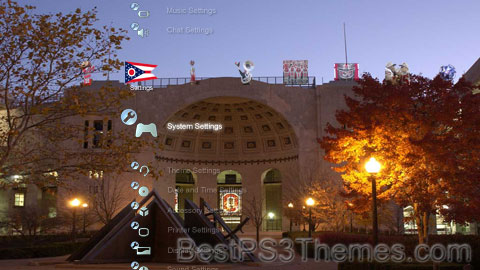
(5 backgrounds)
Tecmo Super Bowl
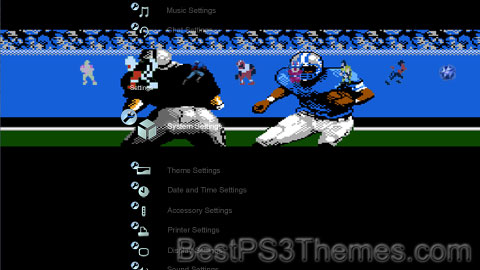
(6 backgrounds)
Tecmo Super Bowl 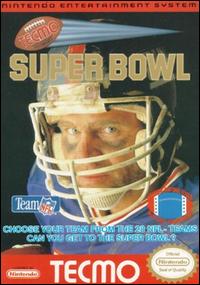
Developer(s) Tecmo Publisher(s) Tecmo Director(s) Shin-ichiro Tomie Programmer(s) Akihiko Shimoji
Tomonobu ItagakiArtist(s) Kazushige Tomita
Yoshitaka MizushimaComposer(s) Keiji Yamagishi
Ryuichi NittaSeries Tecmo Bowl Platform(s) NES, PlayStation Release NES
Super NES: Genesis: Genre(s) Sports (American football) Mode(s) Single-player, multiplayer Overview[edit]
Gameplay[edit]

Reception[edit]
Legacy[edit]
[edit]
Cult following[edit]
In popular culture[edit]
Notes[edit]
References[edit]
...a $54.99 cartridge—the most expensive ever offered for the Nintendo eight-bit system...
Superman #6
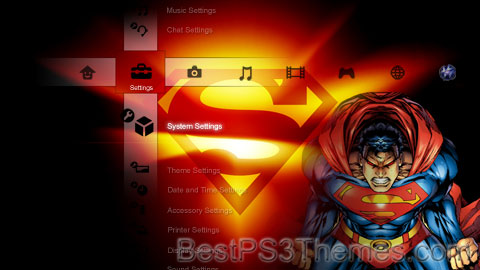
(1 background)
Clark Kent / Kal-El
Superman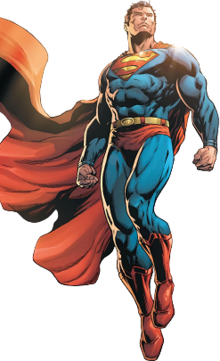
Publication information Publisher DC Comics First appearance Action Comics #1
(cover-dated June 1938; published April 18, 1938)Created by Jerry Siegel (writer)
Joe Shuster (artist)In-story information Alter ego Kal-El (birth name)
Clark J. Kent (adopted name)Species Kryptonian Place of origin Krypton Team affiliations Partnerships Notable aliases Abilities
Development[edit]
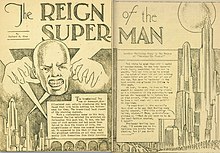
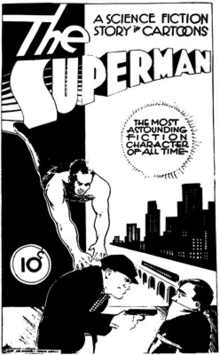

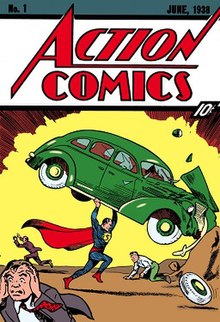
Influences[edit]
Comics[edit]
Comic books[edit]
Newspaper strips[edit]
Editors[edit]
Aesthetic style[edit]
Grand Theft Auto IV #25
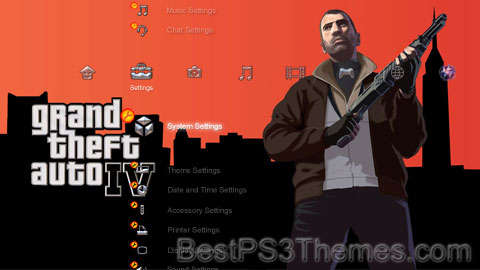
(3 backgrounds)
Grand Theft Auto IV 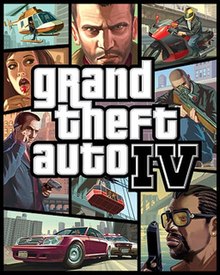
Developer(s) Rockstar North[a] Publisher(s) Rockstar Games Producer(s) Leslie Benzies Programmer(s) Artist(s) Aaron Garbut Writer(s) Composer(s) Michael Hunter Series Grand Theft Auto Engine RAGE Platform(s) Release PlayStation 3, Xbox 360 Genre(s) Action-adventure Mode(s) Single-player, multiplayer Gameplay[edit]

Synopsis[edit]
Setting[edit]
Plot[edit]
Development[edit]

Research and open world design[edit]
Story and character development[edit]
Art design[edit]
Life Is Good
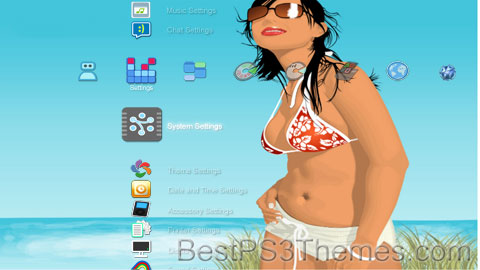
(5 backgrounds)
Music[edit]
Albums[edit]
Songs[edit]
Other uses[edit]
See also[edit]
PS3 Mac 05
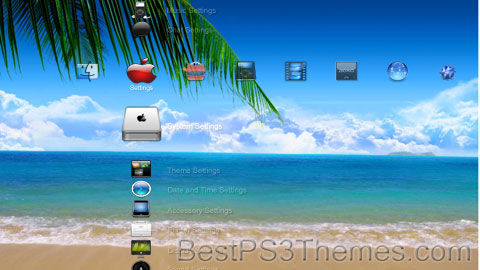
(6 backgrounds)
Copyright (c) 2007. Anoop Menon
p3textractor filename.p3t [destination path]Replace filename with the name of the p3t file, and replace [destination path] with the name of the folder you want the files to be extracted to. A destination path is not required. By default it will extract to extracted.filename.PS3 Mac 04
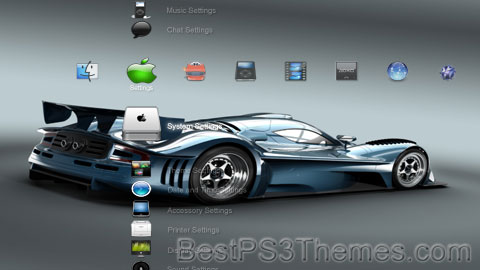
(7 backgrounds)
Copyright (c) 2007. Anoop Menon
p3textractor filename.p3t [destination path]Replace filename with the name of the p3t file, and replace [destination path] with the name of the folder you want the files to be extracted to. A destination path is not required. By default it will extract to extracted.filename.PS3 Mac 03
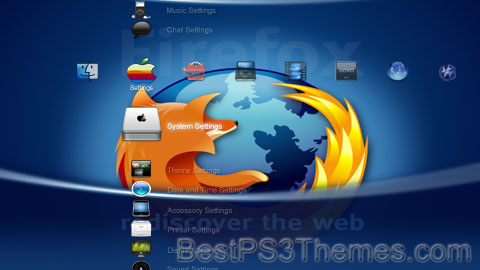
(7 backgrounds)
Copyright (c) 2007. Anoop Menon
p3textractor filename.p3t [destination path]Replace filename with the name of the p3t file, and replace [destination path] with the name of the folder you want the files to be extracted to. A destination path is not required. By default it will extract to extracted.filename.